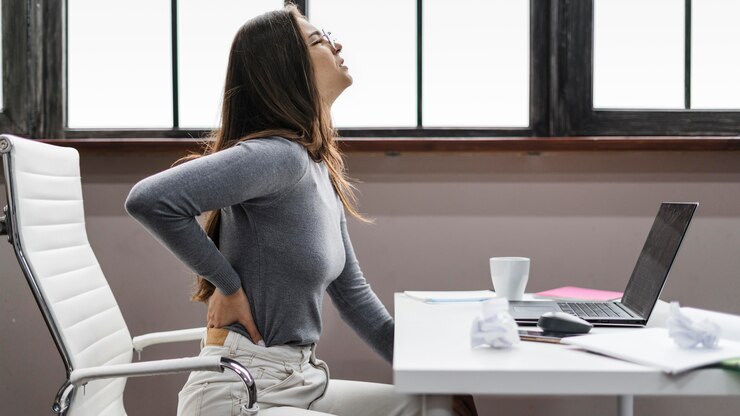
Lower back pain is a common health issue many people experience due to busy lifestyles and a lack of physical activity. Poor posture and unhealthy eating habits are often the main culprits behind this discomfort, contributing to back problems over time. Fortunately, there are simple steps you can take to relieve chronic pain and discomfort by focusing on relaxing the spine and back muscles. Below are some useful tips and preventive measures for managing lower back pain.
Pay Attention to Your Diet
Your diet might not seem directly related to back pain, but it plays a big role. Extra weight puts more strain on your spine, leading to joint compression and forcing your body to work harder against gravity. Eating high-fat, unhealthy foods can lead to weight gain, fatigue, and lower energy levels, making it harder to stay active and keep your body moving. This, in turn, can create stiffness in the spine and reduce mobility. Switching to a healthier diet and losing excess weight can ease the stress on your spine and reduce back pain.
Improve Your Posture
Bad posture is one of the biggest causes of back and spine issues. Sitting in the wrong position for extended periods puts excessive tension on your neck and spine, increasing the curve of your back and causing stiffness and discomfort. Many people don’t realize that their lower back pain is often linked to posture problems. Practice sitting upright to properly stretch your muscles and support your back. If the pain persists, consult your doctor. A chiropractor can also help correct your posture and alleviate back pain.
Focus on Sleeping Positions
Your sleeping position may seem insignificant, but it can significantly impact back pain. Sleeping on your stomach, for instance, can compress the lower back joints and create an exaggerated curve in your spine. This curve might tilt your pelvis and cause muscle imbalances over time. If you’re used to sleeping on your stomach, it’s essential to work on changing this habit. Adjusting your sleep position can take time, so talk to your doctor if you’re struggling to make the switch.
Stay Active with a Workout Routine
Physical activity is key to relieving and preventing back pain. People who stick to a workout routine generally have better posture and are less likely to develop back problems. Even something as simple as a brisk walk can loosen stiff muscles, improve flexibility, and provide better support to your spine. However, always consult a medical professional before starting any new exercise regimen to ensure it suits your condition. Beginning with light activity like walking is a good idea, and once your stamina improves, you can gradually move on to more intense workouts.
Break Up Long Periods of Sitting
Sitting for long stretches, especially in inactive positions, can increase the risk of chronic neck and back pain. This is especially common for people with desk jobs, as prolonged sitting compresses the spine and creates muscle imbalances. Over time, this tightness can lead to tension and pain. Make it a habit to stand up every 20–30 minutes, even if it’s just for half a minute, to ease spine compression and reduce stiffness.
Final Thoughts
Managing lower back pain doesn’t have to be complicated. By following these practical tips, you can reduce pain and prevent further issues. However, don’t hesitate to consult a healthcare professional if your pain persists. They can guide you toward the right treatments and solutions tailored to your needs.